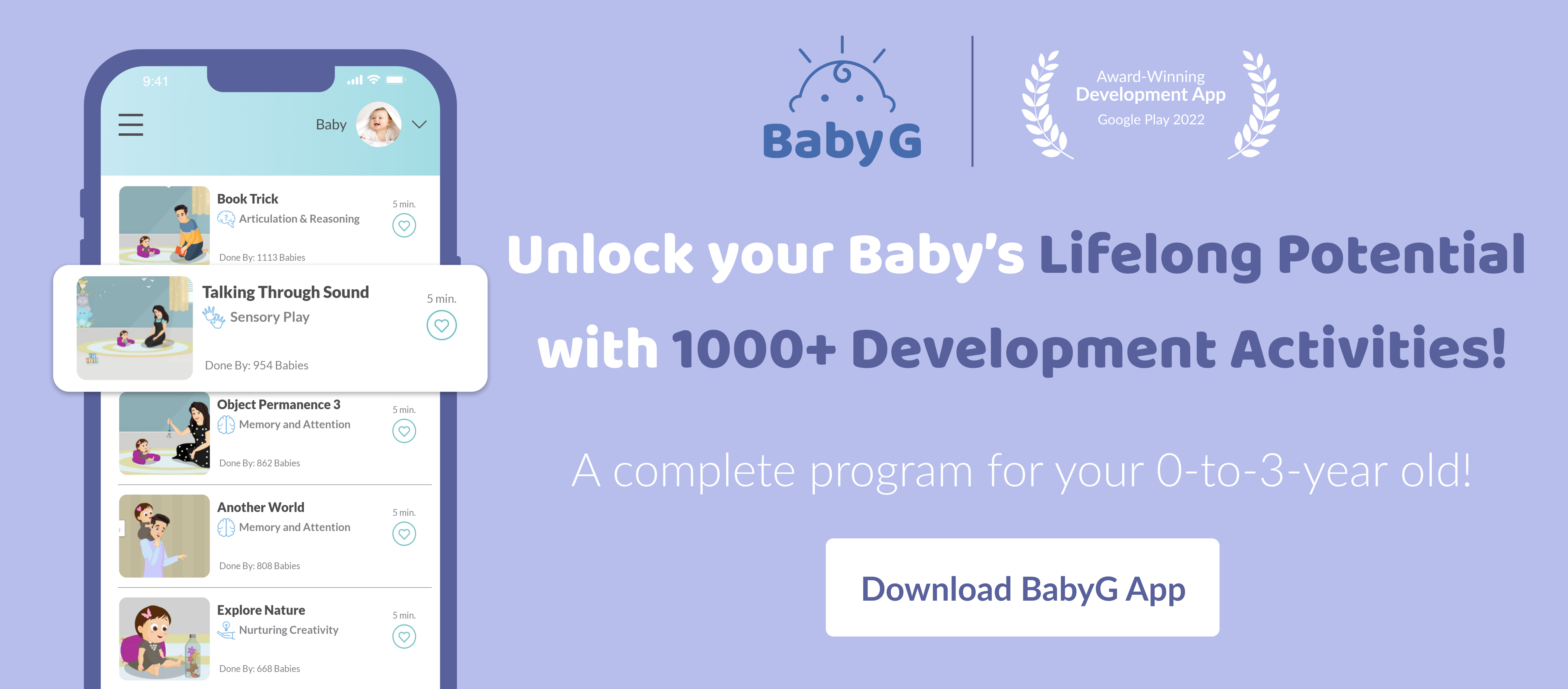
What Milestones Should A 3 Month Old Have?
Physical Development Milestone For 3 Months Baby
At three months, you will notice that your little one is eager to reach out to you and take in more of their surrounding. In 3-month-old baby’s physical milestones, this could mean reacting to you by flailing their hands and feet, tracking you with their head as you pass by them and even pulling on your hair and letting it go when it is within their reach. Let's look at a few integral milestones an infant is bound to show during this time1. Stretches Leg
When you set your child down on their back and position a hard surface by their legs, you will witness that they push back against the surface almost instinctively. Moreover, your infant will stretch and kick with their legs while on their back or stomach.Completion Rate on BabyG App: 95% Babies
Importance: This is an important milestone that helps baby development like gross motor skills. Not only does it acts in strengthening leg and joint muscles, it can be also seen as a preliminary to them preparing to roll over in later months.
What if my baby does not complete this milestone?
Although this milestone has a whopping completion rate to back its rapport, its best to keep in mind that all children develop at different rates and it is necessary to practice gross motor activities to help your child develop the same. That said, contact your pediatrician if your child hasn’t completed the milestone by the fourth month, lacks strength in their limbs and or seems limpy when held in your arms.
2. Tracking with Head
Since their vision and head movement are developing, around three months your baby will focus on moving objects or toys. They will turn their head right to left up and down to track the said object.Completion Rate on BabyG App: 92% Babies
Importance: This milestone helps establish that your baby’s neck control, vision and visual tracking skills are on track for their development.
What if my baby does not complete this milestone?
If your child isn’t turning their head to the sides or tracking with their eyes, then it is wholly recommended to bring it to your pediatricians notice. Tracking is an integral milestone for an infant's visual and motor development. It is best to be on the safer side and have it discussed.
3. Better Neck Control at Tummy Time
During tummy time, your baby will be able to raise and hold their neck steady for a longer period of time. This signals that your baby’s neck muscles is getting stronger. Additionally, they will learn to take the weight of their upper body on their forearms for some time when on their stomach.Completion Rate on BabyG App: 72%
Importance: Tummy time is an essential exercise for your baby. It helps strengthen a baby’s back, neck and shoulder muscles. This lays the foundation for further activities like crawling and later walking. An hour of tummy time is recommended for babies at this age.
What if my baby does not complete this milestone?
While it is common for babies to struggle initially with holding their own during tummy time, by this age, they usually do have enough strength in their neck and forearm for the activity. Remember to distribute tummy time in sections throughout the day and consult your doctor if your baby cannot do so.
4. Oral Exploration
You might have witnessed your young one brings their hands to their mouth to suckle or touch their face with their hands. They might also have increased saliva as well.Completion Rate on BabyG App: 90% Babies
Importance: This milestone aids them in understanding their bodies and exploring their features by mouthing on objects. An early oral motor skill to be exact. While such exploration helps them understand their bodies better it is also seen as a precursor to teething in later months.
What if my baby does not complete this milestone?
In most cases, it might not be a cause for concern until the fourth month. Some infants might simply need little motor exercises to help them develop the coordination required for the activity. Bring it to your child’s pediatrician's notice if they avoid sensory activities in totality.
5. Grasps Object
Once a toy or an object is placed in their open palm or within reach, your baby will curl their fingers around it and hold it for a while. If a rattle is presented similarly, they will shake it to make noise and release the moment they are done playing with it.Completion Rate on BabyG App: 79% Babies
Importance: Learning the voluntary catch and release of objects is integral in early childhood. It aids in the development of skills like fine motor skills, coordination, transferring objects, and hand-eye coordination.
What if my baby does not complete this milestone?
Add a few voluntary palmar grasp activities to your infant's routine to help them achieve this with flying colors. In case they do not reach this milestone by next month, you will need to mention it to your pediatrician during your child’s next check-up.
6. Attempt to Roll Over
Next, while on their back, your child will try to turn on his side without support. In the later months, they will even try rolling over from their stomach to the side.Completion Rate on BabyG App: 76% Babies
Importance: The attempt to turning is a sign that your little one’s muscles are getting stronger and they are exercising coordination and control needed to move sideways. It is an integral step towards mobility. They are a great first start for developing the skills needed to roll over independently.
What if my baby does not complete this milestone?
It is bound to take your child time to learn new skills, they aren’t totally familiar to. Look out for simple activities for body positioning to help your child learn the motor skill.
3 Months Baby Activities To Reach Physical Development Milestones
Here are some of the 3 month old baby physical milestone activities to help your child develop their gross and fine motor skills right from infancy.
1. Eye Focus
You can make use of this activity to develop ‘Tracking with Head’ milestone. Grab a toy and bring it to your child. Ensure that you hold the object at your baby’s eye line so they can focus on it almost instantly. Now move it closer to them and away after a few moments. Once you’ve done this a few times, move it sideways left to right as well so they can track with their eyes. Repeat it a couple of times and your done! This simple exercise helps promote eye control and aids in visual tracking and development.Frequency: Every week 3-4 times for a month
2. Object Grip
This one will work well to promote ‘Grasps Object’ milestone. Pick a rattle with a thick body for this activity. Gently place it in your infant's hands. This will encourage them to open their palms voluntarily and grasp the object. Not only does this exercises your baby’s hand muscles, but it also aids in practicing voluntary motor behavior instead of relying on their natural reflexes.Frequency: Once a day for 2-3 weeks
3. Tummy Time
Build on ‘Better Neck Control at Tummy Time’ with this activity. If you've introduced tummy time since their first month, lay them on a soft blanket in an unobstructed area. But if your child is new to the activity, you can lay them on your chest or stomach facing you and see how they do. Encouraging eye contact is a great way to know if your child is comfortable with it. As you begin initially with a few minutes, increase the time as your child gets familiar with the activity. Such 3 month old tummy time milestone activity is a great way to help your baby develop their muscles and prepare for crawling!Frequency: Couple of times in a day, few a weeks
A great tip is to be consistent in such exercises while being overall kind to your young ones. Although exploring the world is fun, keep in mind not to overexert your baby. You can find more engaging and age-appropriate developmental milestones for your baby at the BabyG app.
Cognitive Development Milestones For 3 Months Baby
Cognitive development refers to your child’s ability to understand, think and learn new things. In the initial months, your little one is likely to familiarise themselves with the world and explore primarily through their senses and motor activities. Even seemingly simple explorations like enjoying playing with their fingers contribute leaps and bound growth in your little ones' cognitive development.1. Imitates Actions
Your baby will start displaying simple actions like mimicking you as you stick out your tongue. Other reactions they might act out are smiling, opening, and closing their mouth, etc. This can be seen as an attempt at learning and understanding human behavior.Completion Rate on BabyG App: 90% Babies
Importance: The act of imitation is often seen as a skill. It has its basis in pre-language skills that your child employs to non-verbally communicate with you. It means that your young one apprehends the intention behind the activity and chooses to respond likewise.
What if my baby does not complete this milestone?
There isn’t a reason for concern if your child does not follow or imitate actions in the third month. If your child does not non-verbally communicate with you by the ninth month, then you should speak to their pediatrician about the issue.
2. Responds to Objects' Behaviour
This milestone refers to your child understanding and responding to simple cues such as an object function. This could translate into them grazing fascinatedly and or flailing arms or legs at the halting and rotating motion of the fan, showing excitement at the sight of their feeding bottle and also giving the rattle in their hand a shake to produce sound.Completion Rate on BabyG App: 79% Babies
Importance: Responsiveness to objects functions and behavious indicates that your baby is slowly understanding cause and effect relationships. That when a rattle is shaken, it will produce sound. This is establishes foundation for voluntary problem-solving and critical thinking later ahead. The transaction also allows for communication and and exploration.
What if my baby does not complete this milestone?
Sometimes, it is totally normal for your young one to be not as responsive as other infants at this age. But if you catch that your baby consistently lacks reaction or interest in their surrounding, it might be best to inform your pediatrician about it. They will help your rule out any developmental concerns.
3. Adapts to Routines
By the third month they will slowly adapt to minimal routines that you create. This could be their bedtimes during the day and night, their feeding schedules, etc. This essentially means that your baby is beginning to understand how things function in the world and is adapting to the same.Completion Rate on BabyG App: 69% Babies
Importance: Adapting to a set routine brings forth a familiarity with structure for your baby. It promotes a sense of understanding concerning events and the intervals that these activities take place. Moreover, building healthy sleeping and feeding habits.
What if my baby does not complete this milestone?
If your baby doesnt complete this milestone, it is no need to worry just yet. Allow your baby the time and space to ease into these routines. Start small and dont give up. Be consistent and kind as you go through the routines using motherese with them. You do this and you baby will soon follow.
4. Enjoys Playing with Hands and Legs
Your baby will enjoy playing with their hands and legs and will often try to bring their leg to their eyes. They will seem interested in exploring their body parts and often put their hands in their mouth to explore.Completion Rate on BabyG App: 57% Babies
Importance: This signifies their attempt at body play that follows their exploration of their body parts and movements. Interestingly, when your baby focuses and crosses midline to reach for their legs with their hands they make use of their core, which relays a win in motor development as well as cognitive control.
What if my baby does not complete this milestone?
There is no reason to worry if your baby has not accomplished this milestone. Body exploration is more common with babies 4 months and up.
3 Months Baby Activities To Reach Cognitive Development Milestones
Here are some of the activities to help your child develop their cognitive skills right from infancy1. Act Out A Rhyme
Help your baby understand actions and promote the ‘Imitates Actions’ milestone with this activity. The exercise is simple, select a rhyme and act out the words with actions and expressions. This will encourage your baby to understand expressions and correlation with words and actions. It is a great exercise to build their observation of human behaviors and memory skills.Frequency: Instill it in their daily routine
2. Bedtime Stories
Here’s an activity to help your child develop their ‘Adaptability to Routines’. Once you have settled your baby in their crib for the night, bring out a book with high-contrast pictures and read it to them aloud. Keep the routine consistent and engaging, so that they not only build their imagination and vision with the images, but also their vocabulary.Frequency: Instill it in their daily routine
3. Recognizing Their Hands and Feet
You child will need to be introduced to the existence of their body parts to promote the ‘Enjoys playing with Hands and Legs’ milestone. This is how you can do so, once your baby is comfortable placed in front of you, bring her hands or legs upto her eyeline. Using motherese, talk about the fingers, toes as you show them to her. They will be fascinated with the existence and slowly recognise the existence of them.Frequency: Once a day for 2-3 weeks
Remember to talk your child through the activity as you proceed to help your little one ease into them. Such engaging activities are vital to help your child build on their developmental skills one play at a time. Also, to be a step ahead, never miss a beat with trackers to check baby’s milestone progress.
Communication Development Milestones For 3 Months Baby
Now, the skill of communication is widely limited for a three-month-old baby. In such cases, we look for nuances, the adorable coos and not-so-adorable voluntary cries. The category, 3-month-old’s communication milestones, refers to how your child understands and chooses to communicate with you non-verbally and within their developmental limits.1. Changes in Crying Pattern
One interesting observation you will now make is that your baby will exhibit different cries for different reasons. You will notice that they cry distinctly when they are hungry to when they need a diaper change.Completion Rate on BabyG App: 90% Babies
Importance: The varying intensity of your baby's cries typically means that they are distressed and want their desires to need to be met by a parent or caregiver. A cry due to distress will sound different that the one out of hunger.
What if my baby does not complete this milestone?
It is perfectly fine if you do not find your baby crying differently to relay their wants. That said, if your baby is crying inconsolably even after all of their needs are met, this could point to colic. Get in touch with your pediatrician to rule out any concerns and methods to deal with them.
2. Tracks Using Sounds
This relates to when your three month old can track the source of nearby sound by turning their head in the direction of the noise.Completion Rate on BabyG App: 87% Babies
Importance: This keeps you reassured of the fact that your baby is on the right track of sound development. To a three month old this entails that they are able to process the such sounds and understand enough to react to the same.
What if my baby does not complete this milestone?
Don't fret, If your baby does not respond to high frequency sounds, it does not necessarily mean hearing loss just yet. However, it is still integral to have their hearing tested as a part of the scheduled check-up by the third month.
3. Tries to Communicate
During this month your baby will actively try to communicate back to you by responding with short bursts of sound or random hand and leg movements. They will also make a lot of different sounds like cooing, gurgling, etc.Completion Rate on BabyG App: 95% Babies
Importance: Such 'talk' relays the attempt to vocalize their responses. This is a significant milestone of development that showcases that your baby processes your information and communicates back within their means.
What if my baby does not complete this milestone?
If your baby hasn’t coo’d then we suggest sharing this with your pediatrician. They might suggest a hearing test to rule out any further concerns.
4. Shows Preferences
Your baby will also show a clear preference for certain sounds. They will react positively (pay attention, calm down) when a favorable rhyme, song, sound, etc is played and may express disapproval when the sound stops playing. Just like sounds, your baby will also show a preference for certain toys when you play with them.Completion Rate on BabyG App: 63% Babies
Importance: Babies showcasing preferences for certain toys or sounds indicate that they are beginning to form such based on their interests. Such cues are integral to processing information and expressing likes and dislikes.
What if my baby does not complete this milestone?
It is fine if your baby doesn't show preferences every time. But if there is an overall disinterest in their surroundings then you should relay it to their pediatrician.
3 Months Baby Activities To Reach Communication Development Milestones
Here are some of the 3-month-old communication milestones activities to help your child develop their skills right from infancy.
1. Responding to Sounds
Use this activity to have your baby achieve the ‘Track using Sounds’ milestone. The workings of this activity is pretty simple, your baby is familiar with how you sound like by now. Place your baby comfortably in a wide space and voice out a greeting to your baby. Ensure that they cannot see your before you do so. This will help your baby process the sound and encourage them to match it to the source of the same.Frequency: 3 - 4 times in a week
2. Understanding Baby
Here the milestone ‘Changes in Crying Pattern’ comes into use. By now you must be able to distinguish between the reasons for varied types of cries. This exercise has you vocalize the activity and soothe her while you do, so your baby begins to slowly understand the basic words and their relation with the activity.Frequency: Instill it in their daily routine
3. Encourage Sounds
This is for when your baby ‘Tries to Communicate’. When they coo or make a sound, vocalize those back to them. The back and forth of such sounds builds the basis of understanding how a conversation works and that her speech is being heard.Frequency: Instill it in their daily routine
While your child’s vocabulary is limited, such activities will encourage your child to respond to you with their best ability. Aim to make such activities fun for your baby.
Social & Emotional Development Milestones For 3 Months Baby
As for social and emotional milestones, your three month old will love being hugged and cuddled by their parents and/or primary caregivers. This is also a peak time for your young one where they respond to social stimulation positively.1. Draws Attention when Hungry
At this stage, your baby now understands that they can use certain cues to draw attention to themselves through various means. One of the most effective ways that infants do this is by crying. Your young one might cry when they are hungry, sleepy or tired to signal their need for nourishment and care.Completion Rate on BabyG App: 95% Babies
Importance: Since infants, have limited ways to express their wants and needs, learning and using such cues helps them get their message across. Also it is a leap in development as they understand that they have the means to incite a response out of people.
What if my baby does not complete this milestone?
If your baby does not cry out of hunger or draw attention to their needs, keep a check on their overall health. Are they eating enough or getting enough sleep, you can do so with easy-to-use trackers to rule out any health concerns. If your child doesn't vocalize their needs remember to bring it to their pediatrician's notice.
2. Recognizes Voices and Faces
Your baby will start to recognize familiar faces and voices. A pattern you will notice is that they show a preference by halting crying and smiling. And on the other hand, when unfamiliar people handle them they might start crying or stare back without expression.>Completion Rate on BabyG App: 84% Babies
Importance: When your child recognizes you and responds by ceasing crying or smiling at the sound of your voice, they establish a sense of security and bonding with the parent. Whereas, the act of indifference or petulant crying at the sight of an unknown person showcases an individual interpretation of dislikeness. All of which are integral for social perception and other cognitive functions.
What if my baby does not complete this milestone?
Give your baby another month before you mention it to your pediatrician. Engage them in comforting activities that will encourage bonding between you and your baby.
3 Months Baby Activities To Reach Social & Emotional Development Milestones
Here are some of the activities to help your child develop their socio-emotional skills right from infancy1. Respond to Baby
Make use of this activity when you are aiming to develop ‘Draws Attention when Hungry’ milestone. This is a simple activity that has you respond to your baby’s crying cues as soon as you can. No amount of attention is too much. Use motherese to ask them what is it that is making them cry. Make them feel heard. This helps develop the basis of communication, builds their self-esteem as well as forms a better bond with you.Frequency: Instill it in their daily routine
2. Slow Dance
Here’s a fun activity to shake things up and bond with your child. Hold the baby in your arms and slowly rock them back and forth to their favourite song or rhyme. Take this time to maintain eye contact, smile, and even laugh through the activity so that they feel comfortable and enjoy the activity with you.Frequency: 3 - 4 times in a week
What Should Be My Baby’s Weight, Height and Head Circumference at 3 Month?
Here are the average data to track your 3-month baby's physical growth and development. If you are worried looking at the data, don't be. Hop into your BabyG app to chat with the team; they’ll help you clear your doubts about your little one's growth curve in more detailAverage weight for 3 month boys: 6.4 kg
Average weight for 1 month girls: 5.8 kg
Average height for boys: 61.4 cm
Average height for girls: 59.8 cm
Average head circumference for boys: 40.5 cm
Average head circumference for girls: 39.5 cm
3 Month Old Feeding & Sleep Milestones
1. Feeding Schedule
During infancy, it is best to feed your young ones when they get hungry. If your baby wants to feed several times a day and seems content and relaxed after a session, you're doing it right. A healthy weight gain and 5-6 diaper changes in a day are good indicators that they are on a promising path of nourishment. In the case of three-month-old infants, here’s a table to understand if they are getting enough milk.Breastfed Babies: 6-8 feedings per day, 10-20 minutes each.
Formula-fed Babies: 5-6 feedings per day, 4-5 ounces (120-150 mL) of formula.
2. Sleep Schedule
Now that your baby is three months old, they'll likely snooze through the night for a span of 4 or 5 hours at the least. Add that to a refreshing daytime nap of 9 to 10 hours, your infant may sleep for a whopping 15 hours per day.When To Worry About 3 Month Old Baby Milestones?
Indeed, your baby is still adapting to their surroundings. They do have plenty of time to catch up on these developmental 3-month-old baby milestones. But it is always wise to be aware and look out for such signs to mention at your next appointment with your child’s pediatrician- Seems floppy in your arms
- Loud noises don't startle them
- Cries inconsolably and doesn't calm down after a while
- Doesn't smile back
- Hasn't started tracking objects with their eyes
- Haven't gained neck control by the third month
- Hasn't completed the 'stretches leg' physical milestone
How To Support My 3 Month Baby’s Development?
It is amazing how a baby’s brain development takes place. In the first year, a baby’s brain doubles in size, and by the third year, 85% of brain development is complete. So it is very important to focus on your baby's development right from birth to unlock their lifelong learning potential.In the third month, your baby is far more responsive and curious to the elements surrounding them. Help them build on these new skills with activities that help you bond with them. Look for activities such as tummy time, conversating with the baby, setting routines and body exploration.
Since babies this age cannot relay their problems to your vocally other than crying or coo’s, You can start actively tracking their sleep, feeds, poop, and pee patterns to understand their growth patterns. Such trackers like an 3 month baby milestones checklist help you look out for any warning signs early in your baby’s development.
The BabyG app has an excellent early childhood development program to give your baby the best possible start. New parents are bound to be wary yet curious in these uncharted territories. Our in-app trackers, schedules, live chats, and many more aim to address all your burning questions in the best possible way. So you can unlock the full potential of your little bundle of joy.
Would you like to know the exciting milestones that lie ahead for your baby in the next month? This is what your baby will expel as they cross the threshold of a 4 month old.




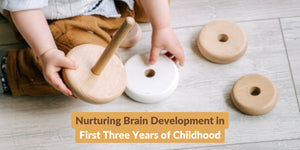



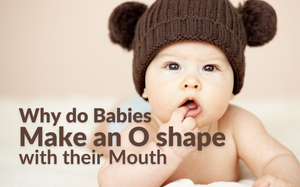
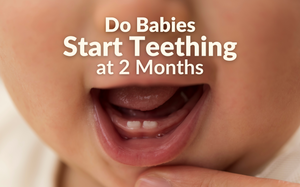
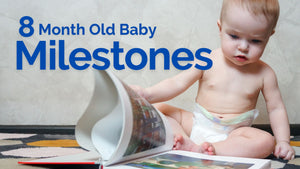
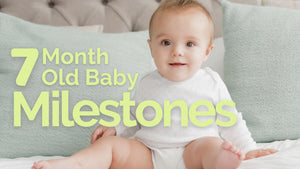

LEAVE A COMMENT